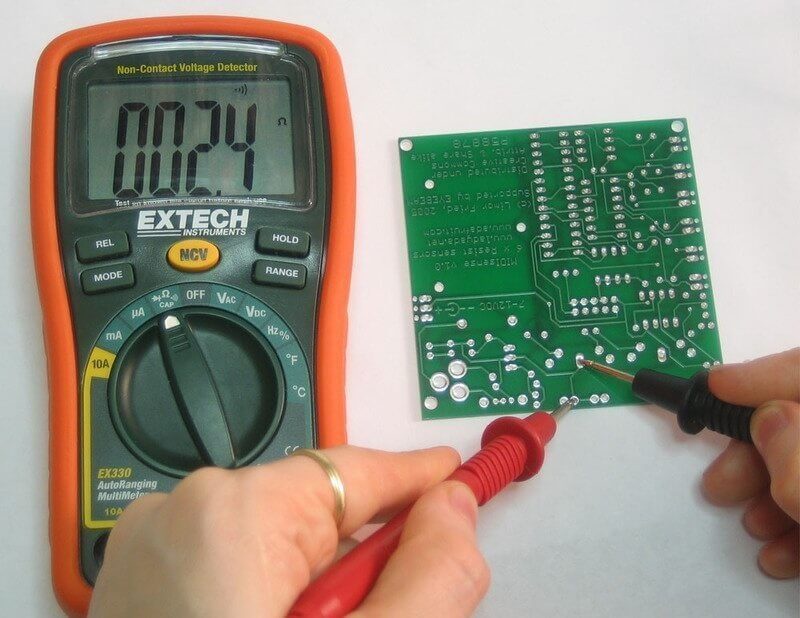Short circuits are a common electrical problem that can cause damage to your devices, or even start a fire. A short circuit occurs when two wires touch each other, causing a surge of current to flow through the circuit. To prevent damage and ensure safety, it is important to know how to find a short circuit.
One useful tool for finding short circuits is a multimeter. In this article, we will discuss how to use a multimeter to find a short circuit and how to fix the problem.
What is a multimeter?
A multimeter is a tool used to measure electrical values such as voltage, current, and resistance. It is a versatile device that can be used for a variety of electrical tasks, including testing for short circuits.
Using a multimeter to find a short circuit
To use a multimeter to find a short circuit, follow these steps:
- Turn off the power
Before working on an electrical circuit, always turn off the power to the circuit you will be testing. This can be done by flipping the switch on the circuit breaker or unplugging the device from the outlet.
- Set the multimeter to continuity mode
Most multimeters have a continuity mode that allows you to test for a short circuit. To use this mode, set the multimeter to the continuity setting, which is usually indicated by a symbol that looks like a sound wave.
- Touch the probes to the wires
Once you have set the multimeter to continuity mode, touch the probes to the two wires that you suspect are causing the short circuit. The multimeter will emit a beep if the circuit is complete, indicating that there is a short circuit.
- Test each wire individually
To find which wire is causing the short circuit, test each wire individually. Touch one probe to one wire and the other probe to a different wire. If the multimeter emits a beep, the wire being tested is part of the short circuit. If the multimeter does not beep, move on to the next wire.
- Repeat the process
Continue testing each wire until you have found the wire that is causing the short circuit.
Fixing a short circuit
Once you have found the wire that is causing the short circuit, you can take steps to fix the problem. Here are some ways to fix a short circuit:
- Replace the fuse
If the short circuit is caused by a blown fuse, you will need to replace the fuse. This can be done by removing the old fuse and replacing it with a new one of the same amperage.
- Separate the wires
If the wires are touching each other, you will need to separate them. This can be done by carefully pulling them apart or using wire strippers to cut the insulation between them.
- Remove overloaded devices
If the short circuit is caused by an overloaded circuit, you will need to remove some devices from the circuit to reduce the load. This can be done by unplugging devices or turning off circuits that are not in use.
- Replace faulty equipment
If the short circuit is caused by faulty equipment, you will need to replace the equipment. This may require the help of a professional electrician.
Safety precautions
When working with electrical circuits, it is important to take safety precautions to prevent electrical shock or other accidents. Here are some safety tips to keep in mind:
- Turn off the power
Always turn off the power to the circuit you are testing before using a multimeter or working on the circuit.
- Wear protective gear
Wear protective gear such as safety glasses and insulated gloves to protect yourself from electrical shock.
- Use caution
Be careful when working with electrical circuits. Do not touch exposed wires or components, and do not work
on circuits that are wet or in damp conditions.
- Use the right tools
Use the right tools for the job, including a multimeter that is rated for the voltage and current of the circuit you are testing.
- Keep your workspace clean
Keep your workspace clean and organized to reduce the risk of accidents.
Conclusion
Short circuits can be a frustrating problem, but with the right tools and knowledge, they can be easily identified and fixed. Using a multimeter to test for short circuits is a simple and effective method, and can help prevent damage to your devices or even fires. However, it is important to take safety precautions when working with electrical circuits to prevent accidents and ensure your own safety.
If you are unsure about how to fix a short circuit or do not feel comfortable working with electrical circuits, it is always best to consult a professional electrician.


No comments yet